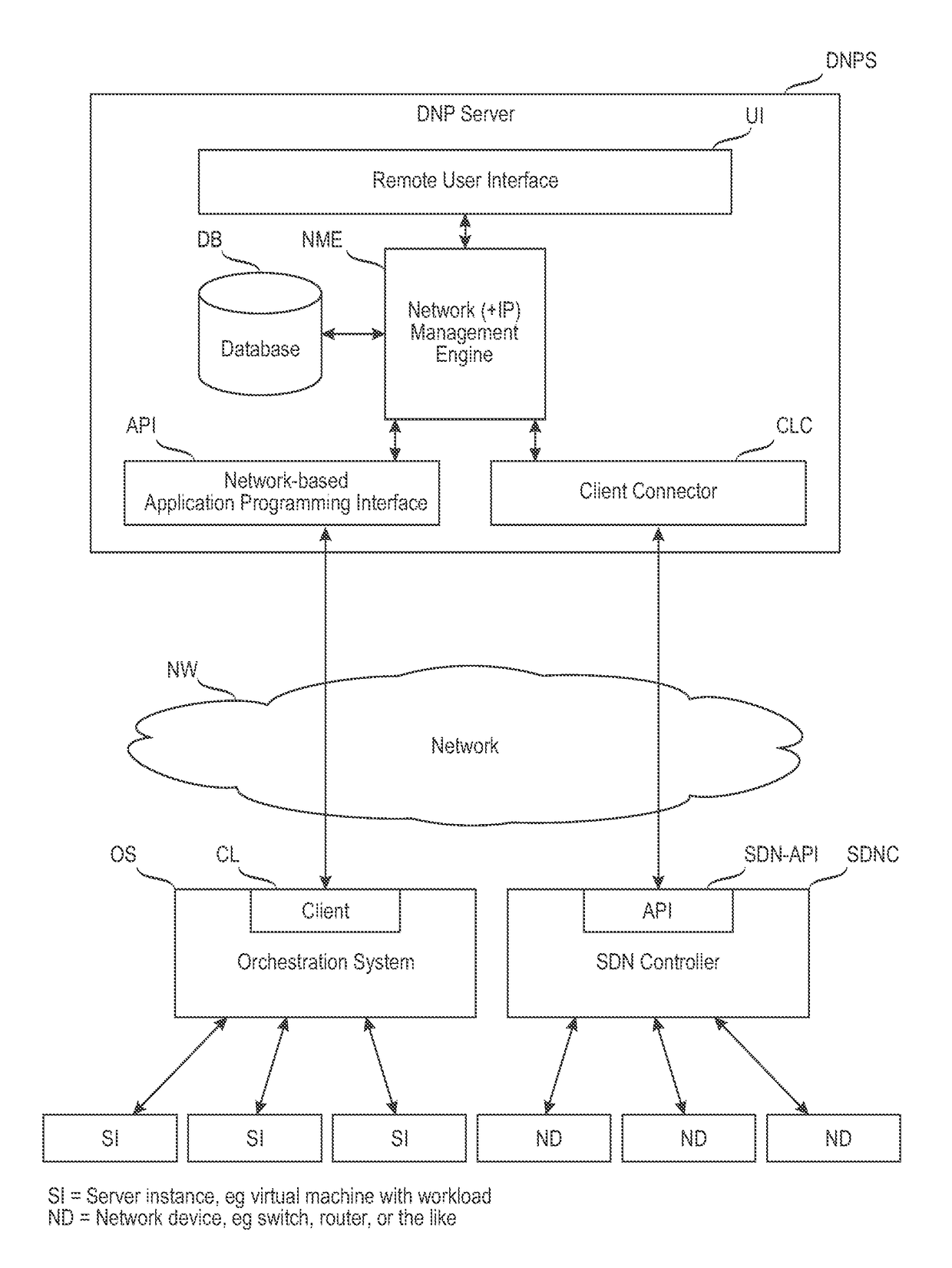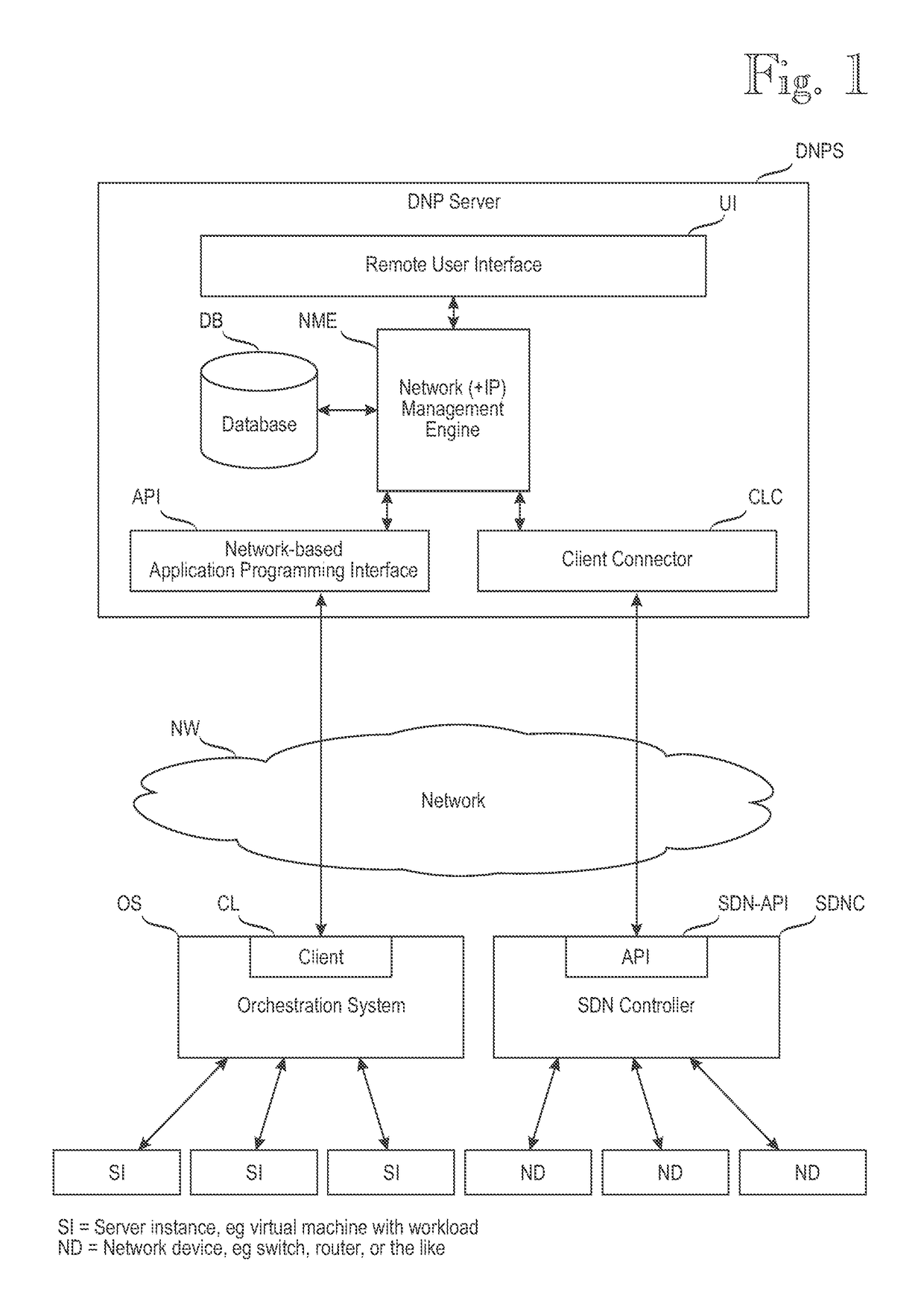Commissioning/decommissioning networks in orchestrated or software-defined computing environments
a computing environment and orchestrated computing technology, applied in data switching networks, instruments, program control, etc., can solve problems such as overlapping of private networks, rather limited address space of ipv4, and insignificant overlap
- Summary
- Abstract
- Description
- Claims
- Application Information
AI Technical Summary
Benefits of technology
Problems solved by technology
Method used
Image
Examples
Embodiment Construction
[0054]FIG. 1 is a block-level diagram of a client-server architecture according to an embodiment of the invention. Reference sign DNPS denotes a dynamic network provisioning server, which implements the above-described dynamic network provisioning process (DNPP). Reference sign UI denotes a user interface, which preferably is a remote user interface, such as a web-based user interface. The user interface can be used to access data, which the DNPS server manages in a database DB. Reference sign NME denotes a network management engine, which implements various management logics relating to commissioning / decommissioning networks and, optionally, IP resources within the managed networks.
[0055]FIG. 1 shows an ambitious embodiment having two parallel mechanisms for dynamic commissioning / decommissioning of networks. The left side of FIG. 1, below the network management engine NME, relates to an implementation, which utilizes one or more orchestrators (servers running orchestration solution...
PUM
 Login to View More
Login to View More Abstract
Description
Claims
Application Information
 Login to View More
Login to View More - R&D
- Intellectual Property
- Life Sciences
- Materials
- Tech Scout
- Unparalleled Data Quality
- Higher Quality Content
- 60% Fewer Hallucinations
Browse by: Latest US Patents, China's latest patents, Technical Efficacy Thesaurus, Application Domain, Technology Topic, Popular Technical Reports.
© 2025 PatSnap. All rights reserved.Legal|Privacy policy|Modern Slavery Act Transparency Statement|Sitemap|About US| Contact US: help@patsnap.com



